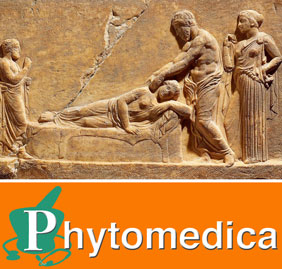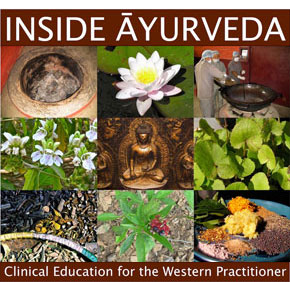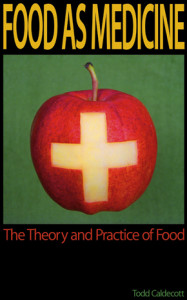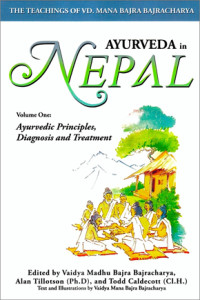This week while browsing the news sites, I came across Dr. David Andrew Pinsky, more commonly known as TV personality “Dr. Drew”, commenting on the health record of Hillary Clinton. A few weeks ago, the New York Times published a letter written by Former Secretary Clinton’s medical doctor, providing an assessment of her physical condition. According to Dr. Pinsky, when he reviewed this letter with a colleague, both of them “concluded that if we were providing the care that she was receiving, we’d be ashamed to show up in a doctor’s lounge,” adding that Mrs. Clinton is receiving a “1950-level” of health care.
While the ethics of making public comment about someone’s health issues based on second-hand information are normally problematic, it is nonetheless true that Former Secretary Clinton is applying for a very public and important position, and the issues related to her health care are a legitimate matter for public debate and discussion. Intrigued by what Dr. Pinsky said, I decided to review the letter issued by Mrs. Clinton’s medical doctor and ascertain for myself whether or not she was receiving the best care, and how if she were my patient, I might address her health issues.
While the letter written by Hillary Clinton’s doctor hardly approaches a thorough case history, it does provide us with some key information, sharing with us that at the age of 67, Mrs. Clinton suffers from hypothyroidism and seasonal pollen allergies. Her past medical history also includes reference to a recurrent issue of deep-vein thrombosis (DVT), diagnosed and treated in 1998, 2009, and 2012. Her current regimen consists of Armour thyroid, antihistamines, vitamin B12, and coumadin, and along with this, her doctor reports, Former Secretary Clinton eats a diet rich in lean protein, vegetables and fruits, and exercises regularly.
Provided only with this brief bit of information, I can see where Dr. Pinsky was coming from, although I do not agree with all his assessments. In particular, Dr. Pinsky took issue with the Armour thyroid used to treat Mrs. Clinton’s hypothyroidism, a desiccated thyroid extract derived from pork. As Dr. Pinsky alluded, desiccated thyroid extracts have been used for more than a century to treat hypothyroidism, but over the last 60 years have been replaced by synthetic versions such as levothyroxine (Synthroid®).
On the surface, this preference for newer generation thyroid drugs appears to be a product of scientific progress, but in reality, it is probably more a reflection of corporate greed. First released into the marketplace in 1955, synthroid has been actively marketed to doctors ever since as the drug of choice when it comes to the treatment of hypothyroidism. Although finally released from patent protection in 2004, synthroid still makes lots of money as the most commonly prescribed medication in the United States.
Despite its popularity, it may come as a surprise that synthroid was being used for several decades without approval by the FDA, and has a long list of issues and side-effects. While some of these issues are in part related to inconsistencies in manufacturing and dosage, most are intrinsically related to the drug itself, such as an increased risk of dementia. And despite Dr. Pinsky’s admonishments, more recent re-evaluations have suggested that natural-source desiccated thyroid is more stable in its effects, and is often preferred over synthroid by hypothyroid patients. In part this benefit relates to the fact that unlike synthroid, which only contains the synthetic equivalent of thyroxine (T4), desiccated thyroid contains a full spectrum of thyroid hormones, including both T4 and T3, as well as T2, T1, and calcitonin. Consider too that the thyroid gland is a traditional food in many cultures, known in the UK as a “sweetbread”, and thus Armour thyroid is less a drug and more of a highly concentrated food with drug-like properties.
Before I disagree with Dr. Pinsky on the use of Armour thyroid, however, I do want to suggest that neither synthroid nor Armour thyroid are a cure for hypothyroidism. Although not indicated in her doctor’s letter, it is likely that Mrs. Clinton suffers from Hashimoto’s thyroiditis, an autoimmune disease that is responsible for more than 90% of hypothyroid cases in North America. Unlike the iodine deficiency-induced hypothyroidism seen in places such as rural Africa and India, Hashimoto’s relates to the immune system attacking the mechanics of thyroid function (e.g. thyroid peroxidase, thyroglobulin, TSH receptors), resulting in its gradual destruction. Thus in long-standing, i.e. improperly treated Hashimoto’s, taking a drug like Armour thyroid (or synthroid) may be the only option left to the patient.
In my clinical experience however, it is possible to reverse Hashimoto’s and gradually reduce and even completely wean the patient off of thyroid drugs. Given the link between hypothyroidism and metabolic issues, I implement a regimen to address insulin resistance including weight-bearing exercise, paired with an individualized Paleolithic-type diet to remove antigenic or problematic foods including cereals, legumes, dairy, refined carbohydrates, and refined oils. Herbal medication is particularly helpful in Hashimoto’s, using warming herbs such as dangshen (Codonopsis pilosula), bladderwrack (Fucus spp.), and prickly ash (Zanthoxylum spp.) to strengthen digestion and metabolism, along with warming cholagogues such as Oregon grape root (Mahonia spp.) and blue flag rhizome (Iris versicolor) that up-regulate bile synthesis to “cleanse” the thyroid, and allow for the proper distribution of heat. This latter benefit is specifically recognized in Ayurveda, which draws a connection between thyroid function (i.e. the generation of bodily heat) and liver function.

One of the best remedies in Ayurveda to address this issue of depressed metabolic function is Kanchanara guggulu, comprised chiefly of the herbs kanchanara bark (Bauhinia variegata), varuna bark (Crataeva nurvala), and guggulu gum (Commiphora wightii), along with the sub-formulas triphala and trikatu. To get the full benefit from this formula however, it must be prepared according to the classical tradition, and not as pressed tablets which contain various excipients and constituents that can aggravate autoimmune issues.
Another drug taken by Mrs. Clinton is warfarin (coumadin), and in this matter I find much more concordance with Dr. Pinsky’s concerns. On three separate occasions, Mrs. Clinton has undergone treatment to resolve deep-vein thrombosis (DVT), a condition in which a clot forms in the deep veins of the legs. While DVT causes local issues such as pain and swelling, the real concern is that the thrombus can break loose and cause a life-threatening pulmonary embolism. To treat this issue, Mrs. Clinton has been prescribed “blood-thinners” such as warfarin, a drug that is notoriously difficult to manage and has a broad range of potentially life-threatening drug and food interactions. Also used as a kind of rat poison that you can buy from your local hardware store, warfarin works by blocking the function of vitamin K, which in turn, inhibits blood clotting. While it’s understandable that warfarin might be used during the initial stages of treatment for DVT, given its terrible safety profile, it doesn’t make sense to use a vitamin-blocking substance on a chronic basis, particularly considering that vitamin K has many other important functions besides clotting, such as the prevention of cancer, coronary artery disease, osteoporosis, and Alzheimer’s disease.
To prevent any further recurrence of DVT, I ensure a proper balance of essential fatty acids in the diet, as the relative, excess consumption of omega-6 fatty acids enhances blood clot formation. Mostly this means avoiding grain-fed animal products as well as seed oils such as corn, sunflower, safflower, and cottonseed, emphasizing the best fats and oils for eating and cooking. Likewise, I remove foods from the diet which are heavy, greasy and hard to digest, such as bread, cheese, ice cream, beef, pork, and deep-fried foods, that in Ayurveda are believed to impair the vascular system.
Apart from exercise to promote circulation, I often suggest herbs such as prickly ash, garlic, and ginger, along with flavonoid-rich herbs that restore tone to the vascular system, including hawthorn flower (Crataegus spp.), gotu kola herb (Centella asiatica), and stoneroot (Collinsonia canadensis). Rather than use life-threatening blood thinners, or even aspirin – a drug which exerts its benefit by essentially “killing” platelets – I recommend fibrin-dissolving enzymes that break down clots, such as nattokinase and lumbrokinase. Neither of these natural products has the same risk profile as any of the conventional blood-thinners, including those recommended by Dr. Pinsky, and are much better suited to chronic administration.

In many respects Mrs. Clinton isn’t all that different from many of the patients I see on a regular basis, and if she were my patient, I too would take issue with her procotol. But unlike Dr. Pinsky, my issue here isn’t an expression of ego, and whether or not my choices would elevate my status in the doctor’s lounge. Even Pinsky’s critique that Mrs. Clinton’s treatment protocol is old-fashioned, conveniently forgets that the alternative he prefers to Armour thyroid is very much a product of the 1950s. And in the end, neither Mrs. Clinton’s physician nor Dr. Pinsky have anything useful to say about the cause of her health issues, demonstrated by a protocol that does nothing except to mask her symptoms – including the use of antihistamines for her seasonal allergies.
What is perhaps more telling about this whole issue, considering that each of us are ultimately responsible for our own health, are Mrs. Clinton’s own biases, and what she thinks about the concept of prevention generally. Perhaps like her politics, Mrs Clinton’s health choices are a reflection of the status quo: she is the “establishment” candidate, so why would she use anything other than “establishment” medicine? Unfortunately, for both Mrs. Clinton’s health and for our shared future, her reliance on “establishment” thinking will eventually prove to be untenable. To achieve real health, like real peace and prosperity, requires a fundamental change in perspective.






